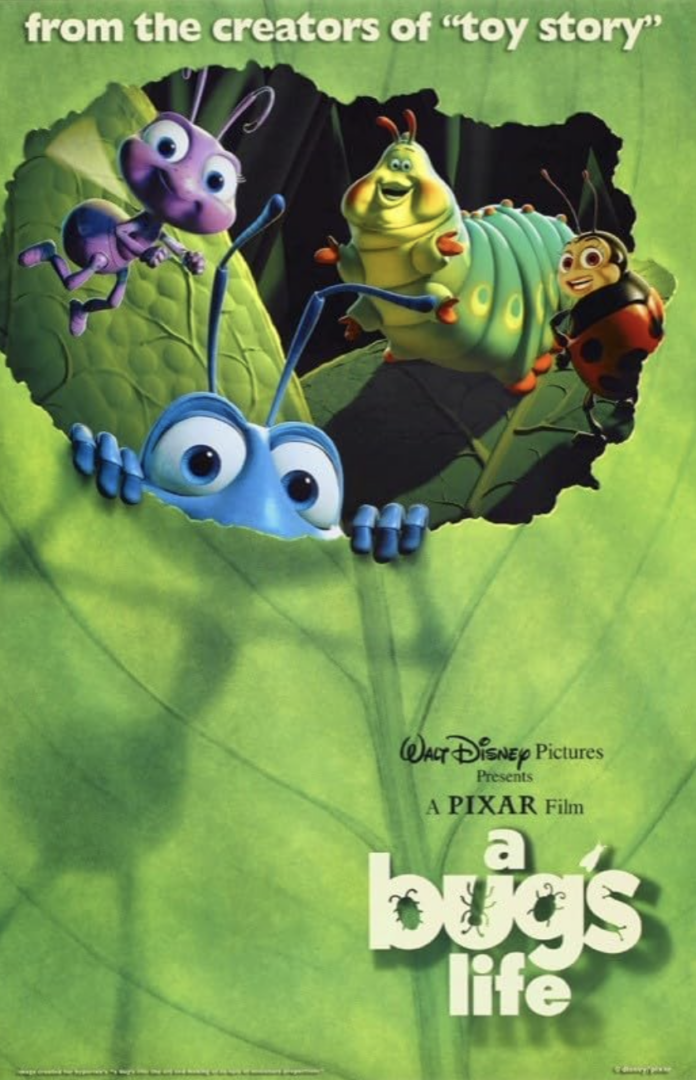The children’s movie holds up even when viewed through an adult lens
By JULIE HUANG – arts@theaggie.org
As adults, circling back to films we watched as children can often evoke feelings of nostalgia and joy that are reminiscent of the twists and turns of childhood. One such film is “A Bug’s Life,” Pixar’s second computer-animated film, which was released in 1998.
The film follows Flik, an ant with a penchant for inventions that seem to cause more harm than good to the ant colony that he calls home. Having been subjugated by a group of grasshoppers, the ants must gather food for both themselves and their tormentors, until one of Flik’s inventions destroys the food offering. Princess Atta sends him on a mission to find warrior insects to defend the colony against the grasshoppers — a disguised ploy to get rid of him for good. When he comes back with a group of circus bugs that he believes are strong warriors, Flik realizes that he must devise another plan to protect his colony, using his knack for inventions.
There are some things about “A Bug’s Life” that may not hold up during a rewatch 26 years after its initial release. For one, the crowd shots feature dozens of CGI ants moving in synchrony and all sporting the same facial expressions. The disproportionate scale of the characters also inspires feelings of uncanniness. In real life, seeing a garden ant nearly the size of a grasshopper would probably be a terrifying experience.
Despite these flaws, the movie itself ultimately makes for a valuable experience due to its lighthearted approach to a mature story and themes that might have been accompanied by a much darker atmosphere if not written for a children’s movie. When viewed by those who have gained the perspective of adulthood, it is clear that “A Bug’s Life” contains heavy concepts such as power struggles between groups of people (or insects) and glimpses into the strategies used by oppressors to maintain hierarchical systems of oppression.
These ideas are handled with care and woven seamlessly into the plot and dialogue of the movie, so that every scene seems believable instead of heavy-handed. An explanation coming from Hopper, the leader of the grasshoppers, on how to crush the ants’ spirits so that they forget their strength in numbers seems like a sufficiently villainous speech for the main antagonist of the movie. Meanwhile, older viewers are able to make the connections between Hopper’s actions and real-life dynamics between oppressor groups and the people they oppress.
The movie’s plot is also driven by the pressing concern of finding enough food to support oneself and one’s family unit. The idea that food is a necessity is obvious to all, including children. However, adult audiences, who are more closely acquainted than children with the daily ins and outs of buying, preparing and budgeting for food, may more readily appreciate the arduous effort the ants must put in to gather foodstuffs.
Rewatching the film in adulthood also adds new emotional layers to the characters, brought about by adult audiences’ ability to draw from a larger bank of lived personal experiences and reflections on those experiences. Flik’s beginnings as an outcast with different interests and attitudes than the rest of his colony are reminiscent of the classic adolescent experience of feeling different and therefore isolated. As the audience follows his character arc from outcast to celebrated hero, they are presented with the idea that their interests and ideas, no matter how different, hold the key to personal fulfillment. Already a valuable message to receive in childhood, older audiences who have lived through circumstances similar to Flik’s are able to bring their own memories to the film, infusing the viewing experience with rich personal meaning.
As a children’s film, “A Bug’s Life” is appropriately cheerful and silly, featuring a bright color palette and an eclectic cast of characters. The childish visuals and cheery atmosphere are supported by a well-developed foundation of themes and concepts with the potential to resonate with audiences much older than children.
Written by: Julie Huang — arts@theaggie.org





